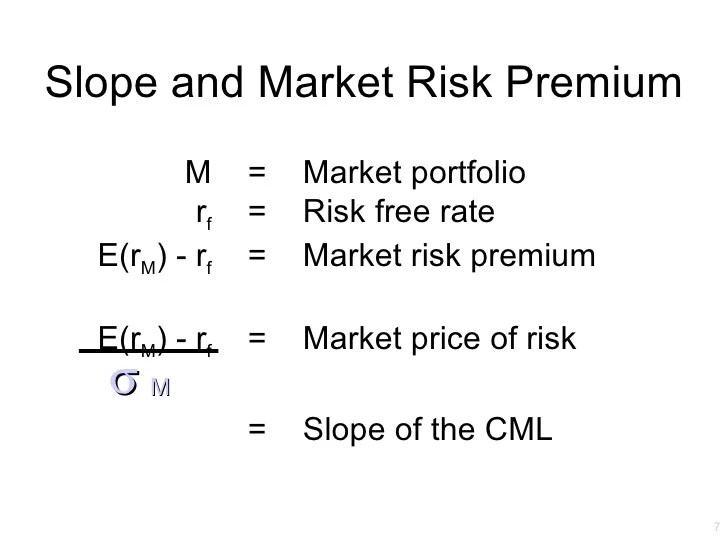Risk Premium - Risk Premium Formula

For an individual, a risk premium is the minimum amount of money by which the expected return on a risky asset must exceed the known return on a risk-free asset in order to induce an individual to hold the risky asset rather than the risk-free asset. It is positive if the person is risk averse. Thus it is the minimum willingness to accept compensation for the risk.
The certainty equivalent, a related concept, is the guaranteed amount of money that an individual would view as equally desirable as a risky asset.
For market outcomes, a risk premium is the actual excess of the expected return on a risky asset over the known return on the risk-free asset.
 Formal definitions for an individual
Formal definitions for an individual

Let an individual's increasing, concave von Neumann-Morgenstern utility function be u, let rf be the return on the risk-free asset, and let r be the random return on the risky asset. Write r as the sum of its expected return rf + , necessary for indifference between the risky and risk-free assets, and its zero-mean risky component x. Then the risk premium is defined by
Here the left side is the degree of attractiveness of the risk-free assetâ€"the known utility of its known returnâ€"and the right side is the degree of attractiveness of the risky assetâ€"the expected utility of its risky return. Thus the risk premium is the amount by which the risky asset's expected return must in fact exceed the risk-free return in order to make the risky and risk-free assets equally attractive.
Further, the certainty equivalent C is defined by
thus the certainty equivalent is the certain value which is equally attractive as the risky asset; due to risk aversion the certainty equivalent will be less than the expected return on the risky asset.

Suppose a game show participant may choose one of two doors, one that hides $1,000 and one that hides $0. Further suppose that the host also allows the contestant to take $500 instead of choosing a door. The two options (choosing between door 1 and door 2, or taking $500) have the same expected value of $500, so no risk premium is being offered for choosing the doors rather than the guaranteed $500.
A contestant unconcerned about risk is indifferent between these choices. A risk-averse contestant will choose no door and accept the guaranteed $500, while a risk-loving contestant will derive utility from the uncertainty and will therefore choose a door.
If too many contestants are risk averse, the game show may encourage selection of the riskier choice (gambling on one of the doors) by offering a positive risk premium. If the game show offers $1,600 behind the good door, increasing to $800 the expected value of choosing between doors 1 and 2, the risk premium becomes $300 (i.e., $800 expected value minus $500 guaranteed amount). Contestants requiring a minimum risk compensation of less than $300 will choose a door instead of accepting the guaranteed $500.
 Finance
Finance

In finance, a common approach for measuring risk premia is to compare the risk-free return on T-bills and the risky return on other investments (using the ex post return as a proxy for the ex ante expected return). The difference between these two returns can be interpreted as a measure of the excess expected return on the risky asset. This excess expected return is known as the risk premium.
- Equity: In the stock market the risk premium is the expected return of a company stock, a group of company stocks, or a portfolio of all stock market company stocks, minus the risk-free rate. The return from equity is the sum of the dividend yield and capital gains. The risk premium for equities is also called the equity premium. Note that this is an unobservable quantity since no one knows for sure what the expected rate of return on equities is. Nonetheless, most people believe that there is a risk premium built into equities, and this is what encourages investors to place at least some of their money in equities.
- Debt: In the context of bonds, the term "risk premium" is often used to refer to the credit spread (the difference between the bond interest rate and the risk-free rate).


0 komentar: